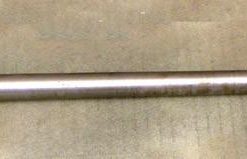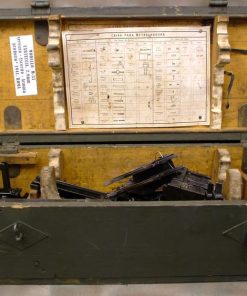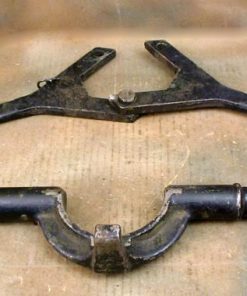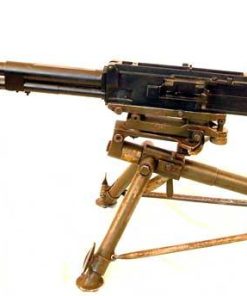Original Egyptian Yom Kippur War Era Inert Rare HOSAM Type II Anti-Tank Grenade – With Washington D.C. EOD Training Aid Sticker Original Items
$ 695,00 $ 208,50
Original Item: Only One Available. This is a fantastic example of an Egyptian HOSAM Type II Anti-Tank grenade, one of the rarest grenades you can find! The grenade, although mostly complete, is totally inert and in compliance per the current BATF regulations governing ordnance.
Unloaded or dummy grenades, artillery shell casings, and similar devices, which are cut or drilled in an BATF-approved manner so that they cannot be used as ammunition components for destructive devices, are NOT considered NFA weapons. This example is in total compliance and is totally inert. NOT AVAILABLE FOR EXPORT.
An anti-tank grenade is a specialized hand-thrown grenade used to defeat armored targets. Although their inherently short range limits the usefulness of grenades, troops can lie in ambush or maneuver under cover to exploit the limited outward visibility of the crew in a target vehicle. Hand launched anti-tank grenades became redundant with the introduction of standoff rocket propelled grenades.
Grenades were first used against armored vehicles during World War I, but it wasn’t until World War II when more effective shaped charge anti-tank grenades were produced. AT grenades are unable to penetrate the armor of modern tanks, but may still damage lighter vehicles.
This is the Egyptian HOSAM Type 2, a hand-thrown high-explosive anti-tank (HEAT) grenade with a PIBD (Point Initiating Base Detonating) spit-back fuzing system.
The fuze striker is locked in place by two safety blocks attached to a ribbon with a lead weight.
The safety blocks (missing) and ribbon are held in position by the outer casing of the grenade and the safety cap, both of which are unfortunately cracked.
The safety cap is held in position by a safety pin which is still present.
The safety pin and safety cap is removed before the grenade is thrown.
When the grenade is thrown, the hinged outer cover opens and falls away. Both of the leather hinges are still present though one was repaired.
This allows the lead strip to unwind the ribbon attached to the safety blocks which pulls them away from the striker so that only the creep spring keeps the striker away from the detonator. This whole assembly is missing.
As the outer cover falls away from the grenade a spring is released which deploys a tube-shaped cloth stabilizer which is slightly torn in places and stained, but still appears to be complete.
A wonderful example of an extremely rare anti-tank grenade. Perfect for the ordnance collector. Comes more than ready for further research and display.
Fast Shipping with Professional Packaging
Thanks to our longstanding association with UPS FedEx DHL, and other major international carriers, we are able to provide a range of shipping options. Our warehouse staff is expertly trained and will wrap your products according to our exact and precise specifications. Prior to shipping, your goods will be thoroughly examined and securely secured. We ship to thousands clients each day across multiple countries. This shows how we're dedicated to be the largest retailer on the internet. Warehouses and distribution centres can be located throughout Europe as well as the USA.
Note: Orders with more than one item will be assigned a processing date depending on the item.
Before shipping before shipping, we'll conduct a thorough inspection of the items you have ordered. Today, the majority of orders will be delivered within 48 hours. The delivery time will be between 3-7 days.
Returns
The stock is dynamic and we cannot completely manage it because multiple stakeholders are involved, including our factory and warehouse. So the actual stock may alter at any time. It's possible that you may not receive your order once the order has been made.
Our policy is valid for a period of 30 days. If you don't receive the product within 30 days, we are not able to issue a refund or an exchange.
You can only return an item if it is unused and in the same state as the day you received it. You must have the item in its original packaging.
Related products
Uncategorized
Uncategorized
Uncategorized
Uncategorized
Uncategorized
Uncategorized
Uncategorized
Uncategorized
Band of Brothers ORIGINAL GERMAN WWII Le. F.H. 18 10.5cm ARTILLERY PIECE Original Items
Uncategorized
Uncategorized
Australian WWII Owen MK1 Machine Carbine SMG Custom Fabricated Replica with Sling Original Items
Uncategorized
Uncategorized
Uncategorized
Uncategorized
Uncategorized
Australian WWII Owen MK1 Machine Carbine SMG Custom Fabricated Replica with Sling Original Items













































































